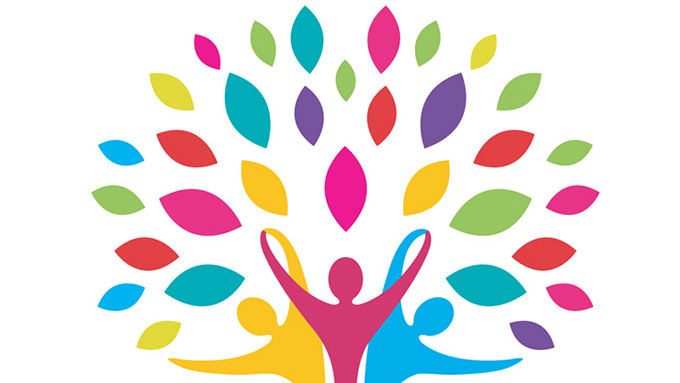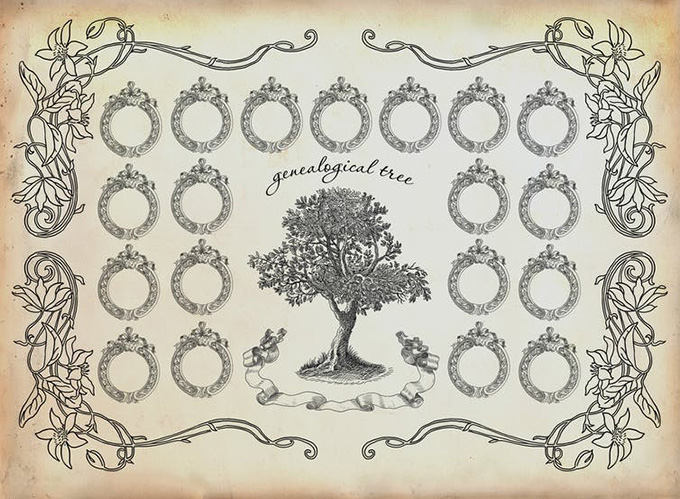How to Draw a Spooky Family Tree

Digital technologies have not returned genealogy to the obsolete leisure department, on the contrary. This practice is now experiencing a resurgence of interest to the point that specialized software is available to carry out its family tree and that we speak of "geneanauts", to designate those who navigate on the web in search of traces of their past.
We also observe that once grown up, the children who have been adopted , those who were born by medical assistance and, in general, all those faced with a secret about their origins also seek by the creation of the family tree. , to illuminate the shadows of their filiation.
Consequently, psychologists have also become interested in this tool in their discussions with families. It was an American psychiatrist, Bowen (1961), who brought the family tree into the framework of systemic family therapy by speaking of "genogram" and by imposing a conventional graphic code to achieve it.
Family history
Subsequently, in France, several works in the field of psychoanalysis invited to use the family tree but leaving the subject to spontaneously make his tree, without any particular instructions . The principle is to collect a free , projective production , which then provides information on the imaginary tree carried in oneself and on the unconscious affective ties established with one's family.
We observe, then, who are the people registered, those who are omitted, the erasures, the omissions, the hesitations, the links which attract attention by a reinforced line, the blanks, the repetitions of first names, the blurs, the originalities , the personal code invented by the subject to build his tree, etc. And, what matters above all, is that afterwards the tree is commented on by the person who made it.
This therapeutic method can be used as a family, as a couple, with adolescents and with children. It allows access to family history , to work on the question of trauma, unrequited, unspoken and secret mourning which the subject inherits without his knowledge. Besides, we see that the younger the children, the more complex it is for them to produce a schematic version of the tree, with arrows symbolically indicating the links…
They then tend to draw a vegetated version of their family tree, with a trunk, branches, leaves, roots, even adding for example animals (birds, squirrels) with which names and first names are mixed.
Children show much more fantasy and free themselves from the socio-cultural normative codes of the making of the tree in favor of an essentially psychoaffective logic.
Graphic mirror
We can of course also offer a child to carry out his family tree outside a therapeutic framework. This can be done in the school setting, or in the family setting, with parents or grandparents. This initiative is never neutral because it leads to reopening the family archives, to delving into memories and this very often awakens emotions.
It is an opportunity to share the history of the family, to talk to the child about his origins, people he did not know, who died before his birth, by evoking memories, anecdotes and responding to questions they ask themselves.

We find common graphic codes from one family tree to another, from one era to another.
In this context, most often, we give instructions to the child, we offer him a graphic code to follow to help him in his achievement. The simplest is that he writes his name and first name on a large sheet, and that he therefore starts from him to then relate graphically to the other members of his family.
On the horizontal plane, we guide him to note his possible siblings, then ascendingly, we then encourage him to go back, stage by stage, to his parents, grandparents and ancestors. We can also suggest that he differentiate the sexes, with a "circle" for girls and "square" for boys, as the "genogram" technique suggests .
Creating a family tree presupposes being able to find one's bearings in time and space, to have integrated, on the psychic level, the principle of the difference of the sexes and generations, to master writing and reading, in other words it supposes a certain psycho-emotional and intellectual maturity.
Under 6 or 7 years old – that is to say entry to the CP -, we are therefore forced to build a tree that rather introduces images – with photos to paste, for example, with a graphic architecture already ready (we find d 'elsewhere online supports of this type).
The family tree has the advantage of offering a graphic mirror where the whole family can be reflected, which returns an effect of unity and strengthens the feeling of belonging. The child can thus find their bearings in parentage and better understand the organization of family ties, the complexity of which can be reinforced, sometimes, by family restructuring.
It is a playful and educational mediation which responds to the need to know its roots in order to grow, to build its identity and which encourages the shared story of family history.
Chatting with your child or grandchild from a family tree means ensuring a mission of transmission, allowing them to get to know their family members better. In short, it's giving yourself the opportunity to share with him a special emotional moment.
Author Bio: Claudine Veuillet Combier is Lecturer in clinical psychology and psychopathology at the University of Angers
Source: https://world.edu/drawing-a-family-tree-with-your-child-what-psychology-says-about-it/
0 Response to "How to Draw a Spooky Family Tree"
Post a Comment